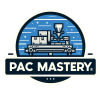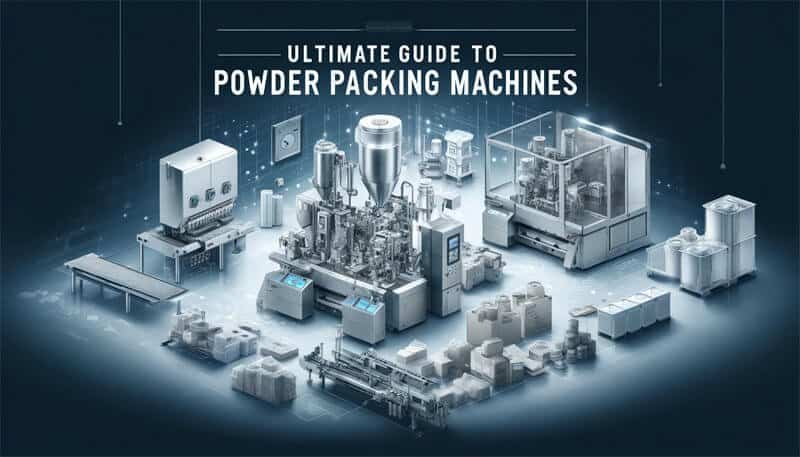Key Takeaways Table
| Question | Answer |
|---|---|
| What are the main types of powder packing machines? | Semi-automatic and fully automatic machines, free-flow and non-free-flow powder machines. |
| What are the benefits of powder packing machines? | Increased efficiency, improved accuracy, enhanced hygiene, and cost savings. |
| How do I choose the right powder packing machine? | Consider product type, bag type, production capacity, budget, and industry requirements. |
| What are common challenges and solutions in powder packing? | Dust control, material flow problems, sealing issues, and frequent clogs or leaks. |
| What industries use powder packing machines? | Food, pharmaceutical, chemical, cosmetics, and more. |
| How do I maintain and care for a powder packing machine? | Routine inspections, cleaning, lubrication, and preventive maintenance. |
Introduction
At PacMastery, our mission is to revolutionize the packing machinery industry through innovative solutions, unparalleled quality, and relentless dedication to customer satisfaction. We strive to empower businesses around the globe with cutting-edge technology and customized machinery, ensuring efficiency, reliability, and excellence in every packaging process. Committed to sustainability and ethical practices, we are not just building machines; we’re crafting a more efficient, productive, and responsible future in packaging.
Types of Powder Packing Machines
Semi-Automatic vs. Fully Automatic Machines
Semi-Automatic Machines:
- Require manual intervention for certain tasks such as placing containers or pouches.
- Suitable for businesses with moderate production needs and lower budgets.
Fully Automatic Machines:
- Operate with minimal human intervention using sensors and automated systems.
- Ideal for high-capacity production lines, ensuring consistency and reducing human error.
Free-Flow vs. Non-Free-Flow Powder Machines
Free-Flow Powder Machines:
- Designed for powders that flow freely, such as granulated sugar or salt.
- Use volumetric or auger fillers to dispense powders accurately.
Non-Free-Flow Powder Machines:
- Handle cohesive powders like powdered milk or brown sugar.
- Utilize specialized auger fillers to manage the powder's density and flow characteristics.
Benefits of Using Powder Packing Machines
Increased Efficiency
Automated powder packing machines significantly boost production speeds compared to manual methods. This increase in efficiency allows businesses to meet higher demand and improve their overall output.
Improved Accuracy
Precision in measuring and sealing is crucial in powder packing. Automated machines ensure consistent product weight and reduce the risk of overfilling or underfilling, which helps maintain product quality and customer satisfaction.
Enhanced Hygiene
Powder packing machines are designed to minimize operator contact with the product, reducing the risk of contamination. This is particularly important in industries like food and pharmaceuticals where hygiene standards are stringent.
Cost Savings
While the initial investment in powder packing machines can be high, they offer long-term cost savings. Faster production, reduced waste, and lower labor costs contribute to a more economical operation over time.
Choosing the Right Powder Packing Machine
Product Type and Bag Type
Consider the specific characteristics of the powder you are packing and the type of bags you will use. For instance, free-flowing powders might require different handling than non-free-flowing powders. The choice of bag types—such as stand-up pouches, gusset bags, or flat bags—also impacts the machine selection.
Production Capacity
Determine your production targets to select a machine that can meet your needs. Whether you aim to produce hundreds or thousands of units per hour, choosing a machine with the appropriate capacity is essential.
Budget and Industry Requirements
Balance your budget with the specific needs of your industry. Some industries, like food and pharmaceuticals, have stringent requirements for sanitation and accuracy. Investing in a machine that meets these standards is crucial for compliance and product safety.
Common Challenges and Solutions in Powder Packing
Dust Control
Dust generated during the packing process can be a significant issue. Using dust collection systems and proper ventilation can help manage this challenge. Additionally, regular maintenance and cleaning of the packing machine are necessary to prevent dust accumulation.
Material Flow Problems
Different powders have varying flow properties. Machines equipped with features like hopper agitators, pre-compression boxes, or vibrators can help manage material flow issues. Adjusting the temperature and humidity of the environment may also be beneficial.
Sealing Issues
Ensuring proper sealing is vital to maintain product integrity. Regular inspection and maintenance of seal jaws, optimizing seal temperature, pressure, and dwell time, and using the right packaging materials can resolve sealing problems.
Frequent Clogs or Leaks
Frequent clogs or leaks in powder packing machines can disrupt production and cause delays. To prevent these issues, it is essential to:
- Adjust augers, seals, and hoppers regularly to prevent buildup.
- Choose a machine type suited to the powder’s flow properties.
- Perform preventive maintenance to identify worn or defective components early on.
By addressing these common challenges proactively, you can ensure a smoother and more efficient packing process.
Applications of Powder Packing Machines
Food Industry
Powder packing machines are widely used in the food industry to pack products like bakery mixes, spices, milk powder, and protein powders. They ensure consistency and quality in the packaging process.
Pharmaceutical Industry
In the pharmaceutical sector, these machines are critical for the precise filling of powdered drugs and supplements. They help maintain the accuracy and hygiene standards required in this industry.
Chemical Industry
Powder packing machines are essential for the high-volume filling of powdered chemicals used in various industries such as agriculture, mining, and automotive. Robust and heavy-duty machines are required to handle these industrial chemicals efficiently.
Cosmetics Industry
In the cosmetics industry, powder packing machines are used for packaging products like baby powder and cosmetic powders. These machines help ensure that the products are packed hygienically and efficiently, maintaining high-quality standards.
Other Sectors
Powder-packing machines are also used in various other sectors, including cement and fertilizer industries. The type of machine and special features required depends on the unique needs of each application, such as safety mechanisms for handling hazardous materials.
Maintenance and Care Tips
To keep powder packing machines in optimal working condition, regular maintenance is essential. Here are some key practices:
- Routine Inspections: Regularly check seals, spouts, augers, motors, and other moving parts for wear and tear. Replace any damaged components immediately.
- Thorough Cleaning: Disassemble and clean all parts that come into contact with the powder after each production batch. For food and pharmaceutical applications, sanitization is crucial.
- Lubrication: Lubricate seals, bearings, chains, and other moving parts as recommended by the manufacturer to minimize friction and wear.
- Calibration: Ensure all control panels, sensors, and load cells are properly connected and calibrated. Recalibrate or replace components as needed.
- Preventive Maintenance: Conduct test runs with empty bags or pouches to ensure the machine functions correctly after reassembly. Keep detailed records of maintenance activities for quality control and improvement purposes.
By adhering to these maintenance practices, businesses can ensure their powder-packing machines operate efficiently and have a prolonged lifespan, ultimately enhancing productivity and product quality. For more information on maintaining and optimizing your packing machinery, visit PacMastery's comprehensive guides.
To further ensure the longevity and efficiency of your powder packing machines, consider these additional maintenance tips:
- Review Control Panels and Sensors: Regularly check the control panels, load cells, and sensors to ensure proper connections and calibration. This helps in maintaining the accuracy and efficiency of the machine.
- Test Runs: Conduct test runs with empty bags or pouches to verify the machine's functionality after reassembly post-cleaning or repair. Make any necessary adjustments before resuming full production.
- Good Manufacturing Practices (GMP): Follow general good manufacturing practices, such as controlling access to machines and providing adequate operator training. This helps in maintaining the quality and safety of the packing process.
Conclusion
Powder packing machines are essential for businesses across various industries, providing significant benefits such as increased efficiency, improved accuracy, enhanced hygiene, and cost savings. By choosing the right machine and maintaining it properly, businesses can ensure consistent product quality and meet their production goals effectively.
For businesses looking to invest in powder packing machines, it is crucial to consider factors such as product type, bag type, production capacity, budget, and industry-specific requirements. Addressing common challenges proactively and following a robust maintenance schedule can further enhance the machine's performance and longevity.
At PacMastery, we are committed to revolutionizing the packing machinery industry with innovative solutions and customized machinery that cater to your unique needs. Explore our range of powder packing machines and other advanced packaging solutions to elevate your business to new heights.



